Long range, low energy consumption, ultra-rapid charging.
These hallmarks signal the pinnacle electric vehicle that most car brands are striving to achieve. Hyundai’s latest Ioniq 6 sedan claims to have hit all three with a strong focus on an aerodynamic design. With supply now improving, is it worth considering?
Despite using the same battery, electric drive unit, and ground-up platform as the Ioniq 5 electric SUV, the South Korean carmaker has managed to yield a whopping 107km more claimed range on the base Dynamiq rear-wheel drive (RWD) model with the Ioniq 6’s more aerodynamic body shape.
Is the Ioniq 6 the ‘ultimate’ efficient EV in Australia?
Here, we tested the Ioniq 6 in the most affordable and longest range Dynamiq RWD variant, priced from $74,000 before on-road costs. It directly competes against the Tesla Model 3 Long Range, Polestar 2 Long Range Single Motor, and upcoming BYD Seal electric cars.
zecar rating
Good points
- Step up in design details
- Demonstrates efficient can look good
- Comfortable, quiet ride
Could be better
- Light steering, sensitive brake pedal
- Driver's seating position can be difficult
- i-Pedal improved, but still not 'one-pedal driving'
EDITOR’S NOTE: The test vehicle was provided by Hyundai Australia for a seven-day independent evaluation.
Ioniq 6 Design and Practicality
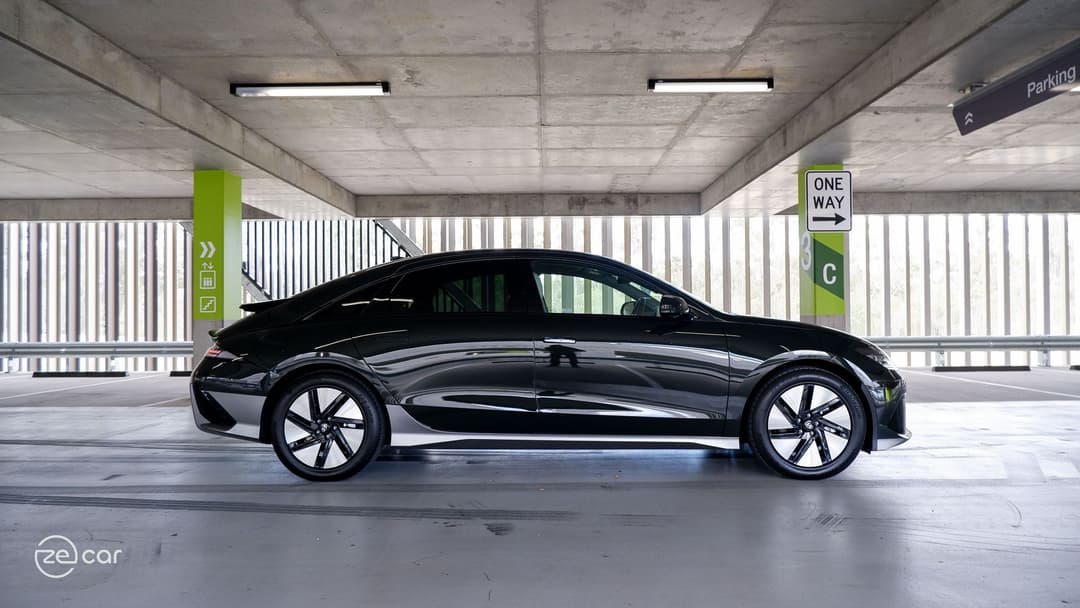
Hyundai has cleverly managed to design the Ioniq 6 sedan with its own distinct identity, while maintaining the retro-futuristic design of the Ioniq 5 SUV.
The Ioniq 6 EV combines the sporty rear of an older Porsche 911 coupe with the friendlier face of the top-selling Tesla Model 3 electric sedan.
The rear is the highlight of the aerodynamic sedan with an aggressive bumper, double ‘duck tail’ tail-lights (which clearly illuminates three levels when braking), and a rounded bubble-shaped roofline. It also leaves passers-by questioning due to the lack of a Hyundai logo.
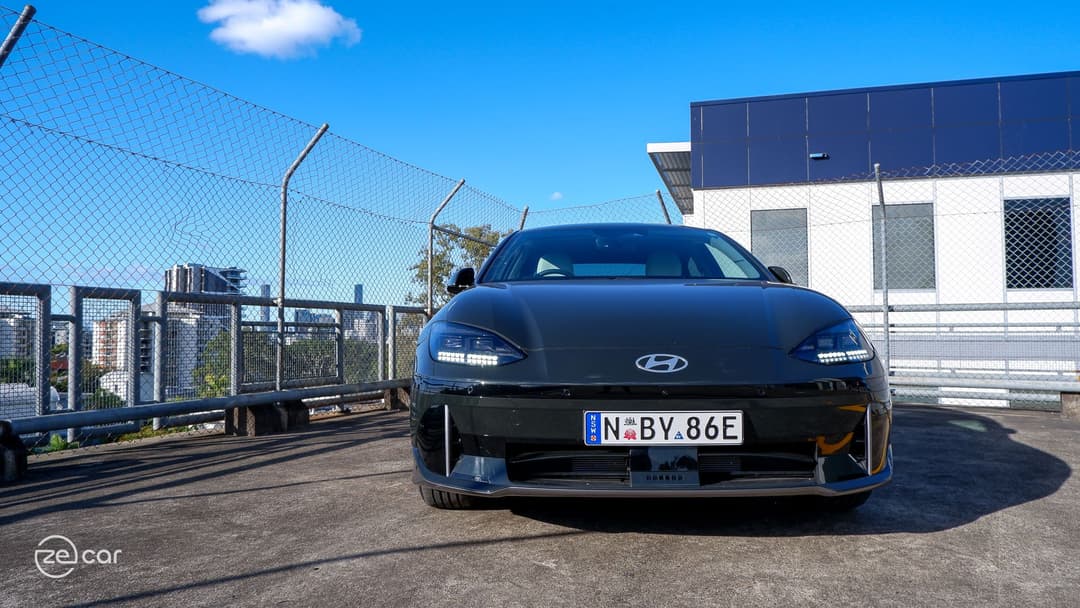
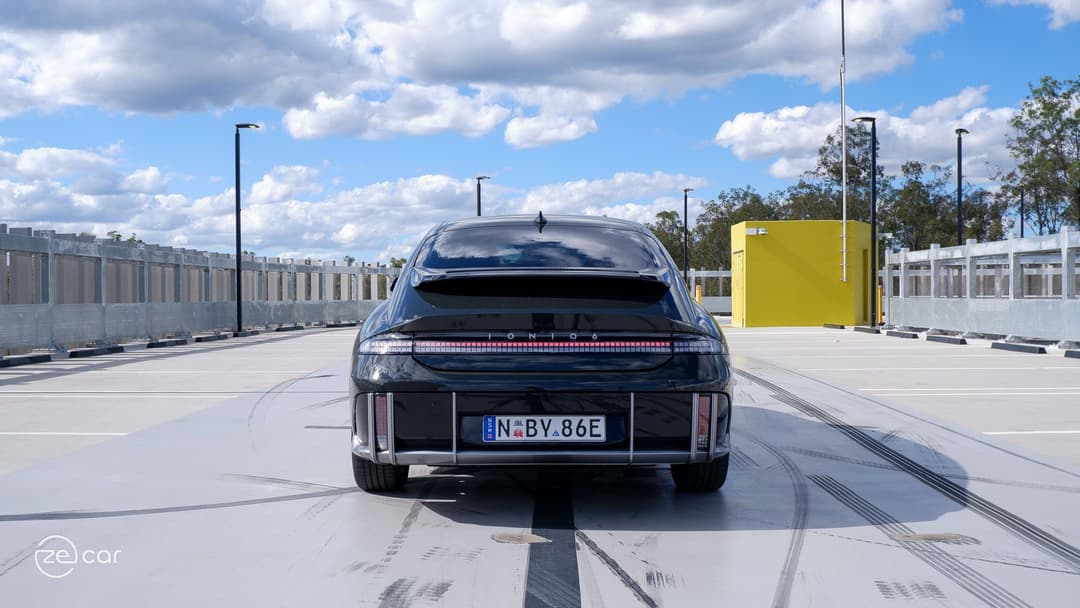
Signature Ioniq pixel dot motifs are deployed across the exterior and interior – even including the wiper blade area and light-up steering wheel morse code. Hyundai’s new key fob design is unique, too, with the physical backup key thankfully attached separately.
Meanwhile, the front is subjectively more ambiguous – but still sportier looking in person than the minimalistic Tesla Model 3. Our tester’s dark Digital Green paint also hides the full-width black safety sensor visor well – it looks less integrated compared to the Ioniq 5 EV’s design.
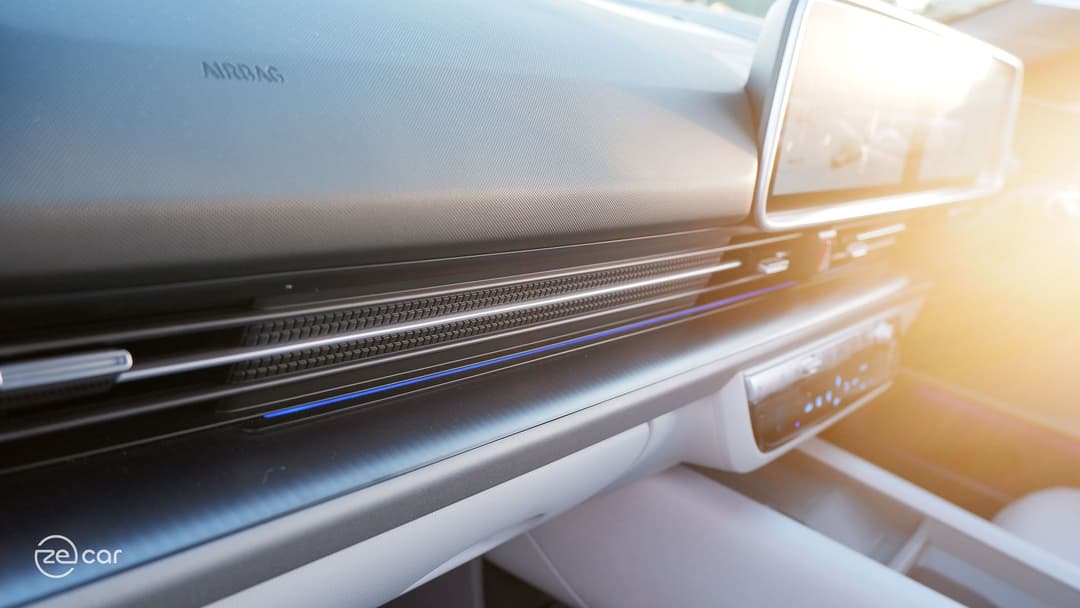
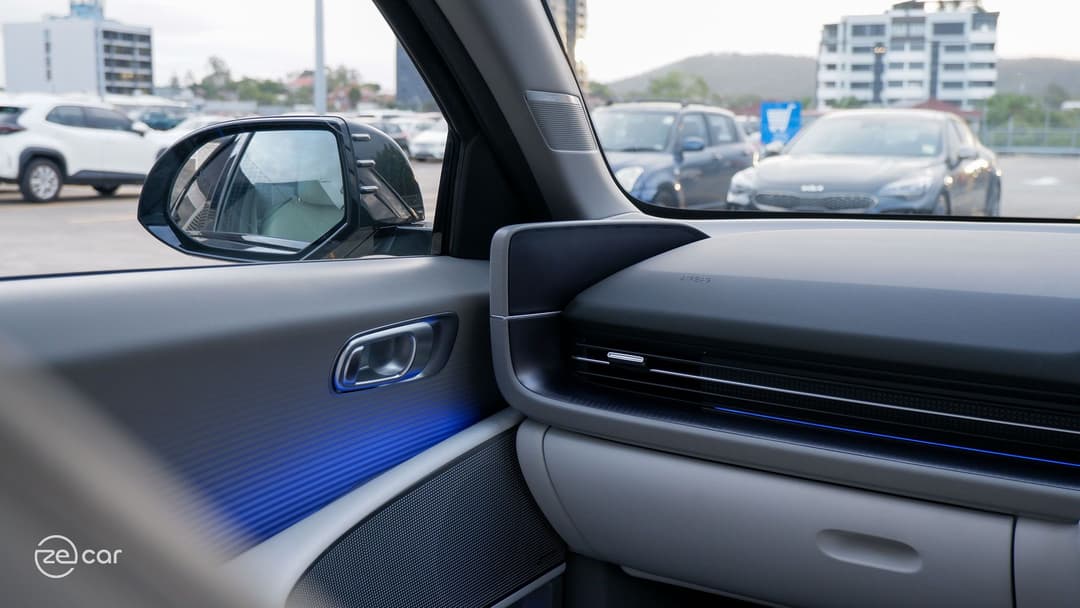
Inside, the Ioniq 6 is a notable step up in attention to detail with pixel motifs, more interesting materials, and some higher quality switches compared to the Ioniq 5 SUV.
It’s a modern feeling interior with use of interesting eco-friendly materials, padded fabrics, a concrete-like centre console, large carved out metal-like speaker grilles, and groove patterned door card plastics. While the latter does feel hard, it still gives off a premium impression.
Additionally, the carmaker has addressed key controversial elements from the Ioniq 5 by switching to black bezel displays with satin trim surrounds, mostly adopts USB-C charging ports, and the steering wheel controls, while still gloss black, are now tactile individual buttons with clicky switches and knurled dials – usually reserved for Genesis luxury cars.
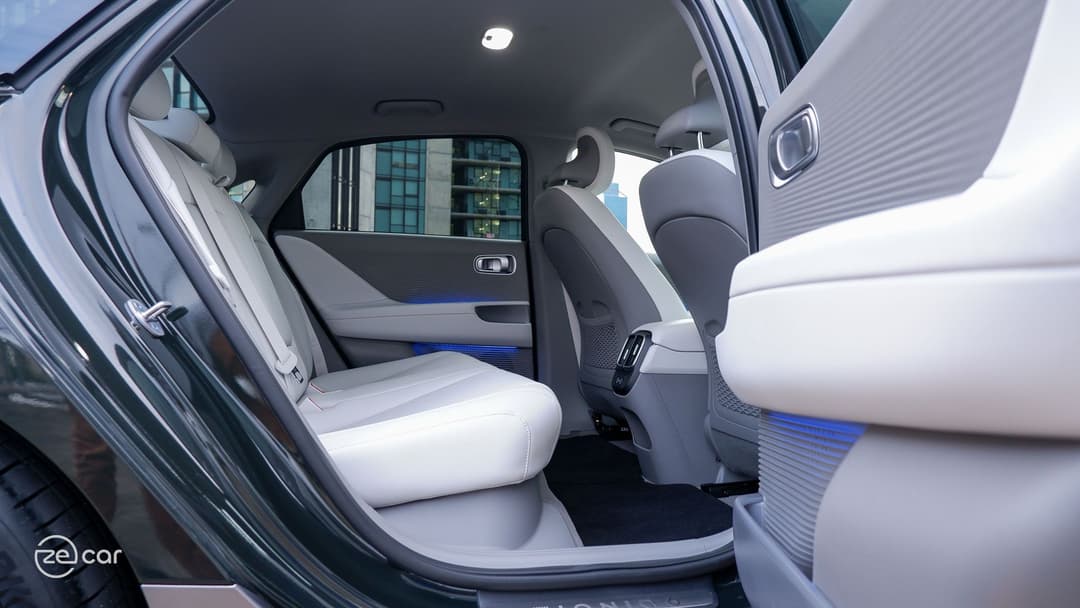
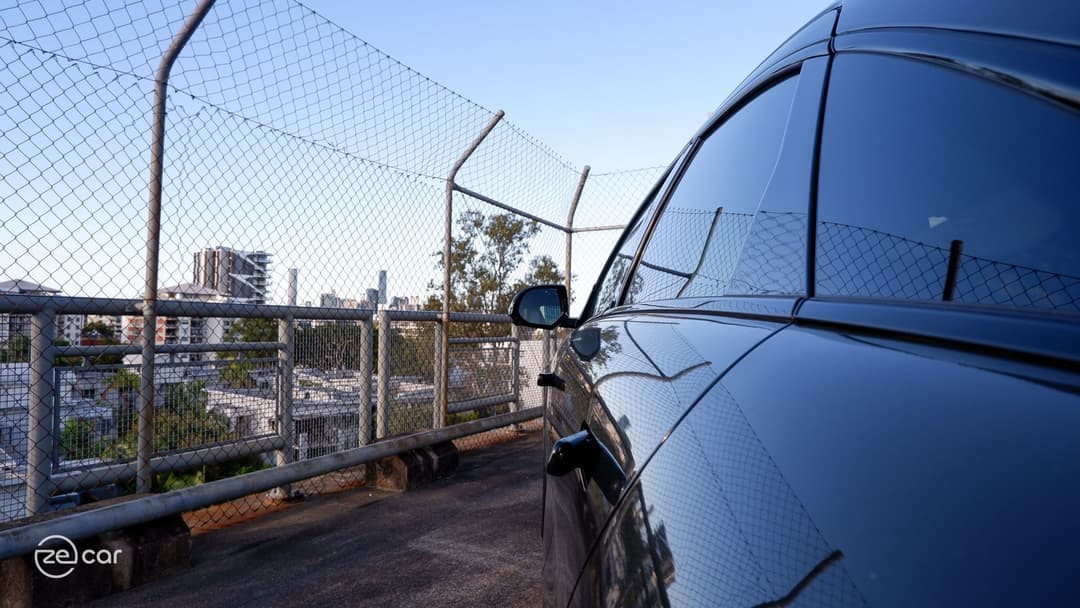
An underrated feature are the automatic pop-out flush door handles, which leaves passengers less confused on how to open the doors compared to the Tesla Model 3.
While there’s plenty of rear seat legroom and a flat floor thanks to Hyundai’s dedicated Electric Global Modular Platform (E-GMP), taller passengers’ heads could hit the sloping roof if sitting upright.
The higher floor means knees are more perched up than a Polestar 2 EV and, due to the lower rails of the front seats, feet can’t stretch underneath them as well either.
There’s also a soft fabric armrest which extends upwards at the rear, two USB-C charging ports, centre console air vents, and two ISOFIX and three top tether child seat anchor points.
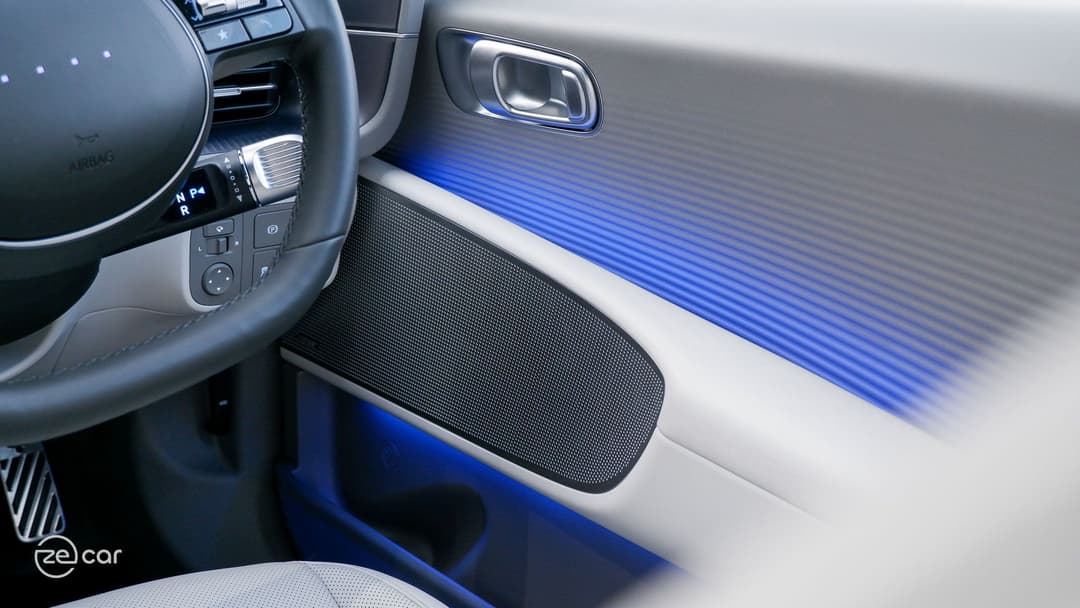
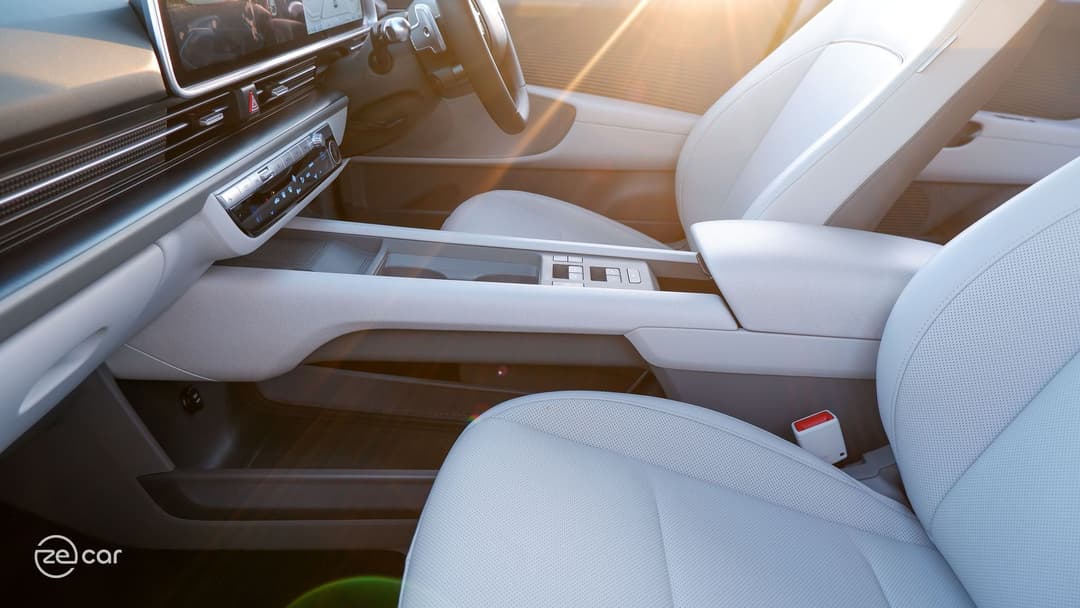
But, all door pockets are constricted with the front row further limited due to the thinned-out design. As a result, the front window switches have moved to the centre console and mirror controls beside the steering wheel, which aren’t as intuitive but you do adapt to it.
Unlike the Hyundai Ioniq 5 SUV, the centre console divides the front with a flat design. It’s marketed as a laptop table, though in practice, this wasn’t ergonomic since it’s lower and angled on the side.
The Ioniq 6 sedan does provide large undertray storage – but lacks any illumination – and the slide-out glove drawer isn’t as deep as the Ioniq 5.
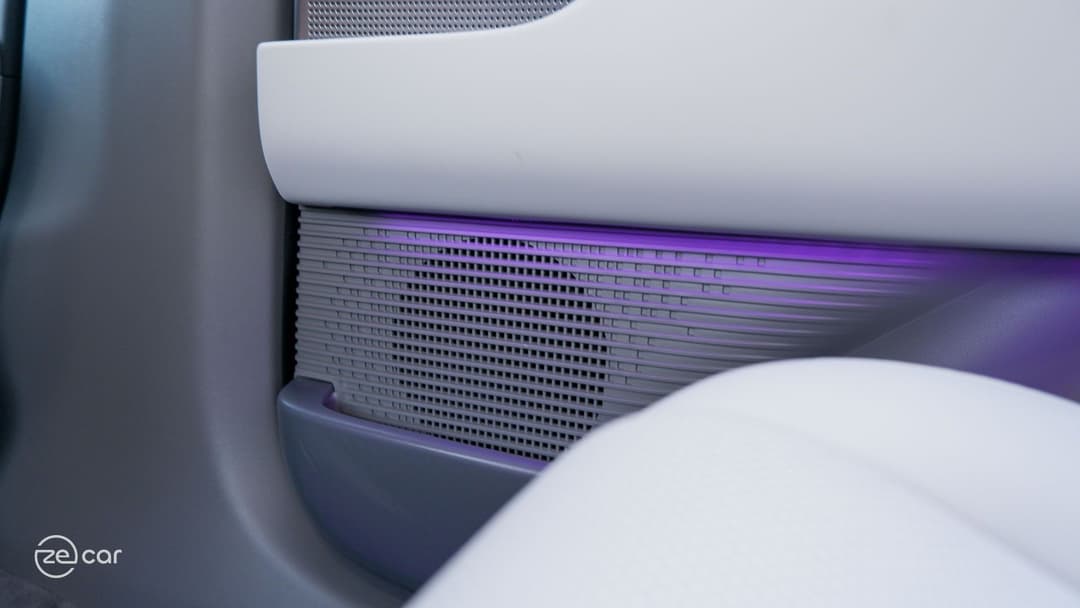
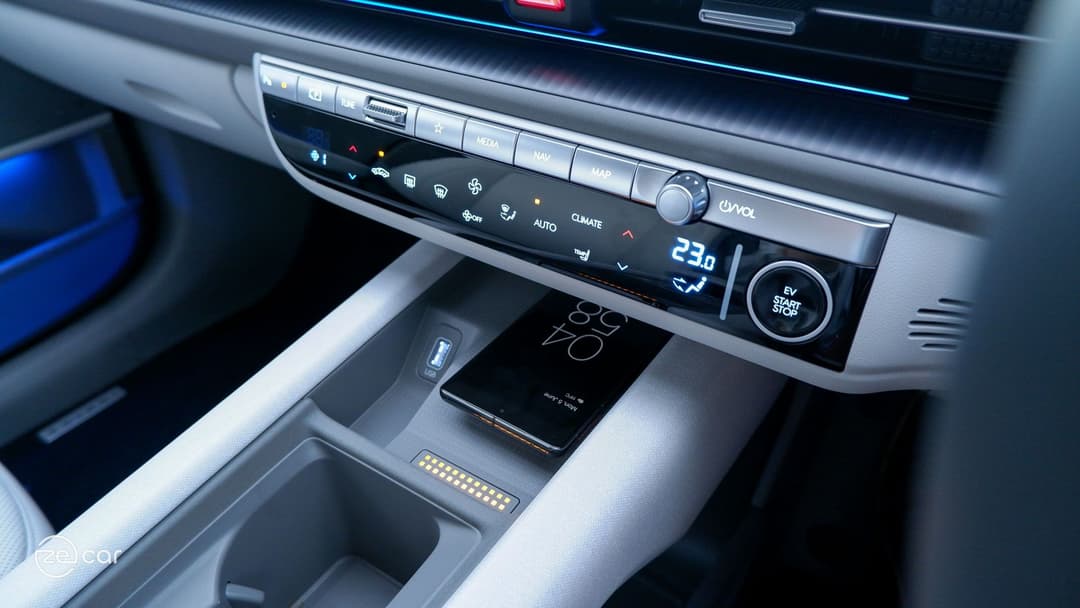
The Qi wireless charging pad doesn’t have a large rubberised surface and isn’t deep enough either, so smartphones tend to slide around while driving. There isn’t much space to fit dangling cables when using the USB-A port for smartphone projection, too.
All seats were comfortable and supportive with three-stage heating functionality for the front, as standard on this base Dynamiq model. But, toggling them requires using the touchscreen.
Hyundai has improved the touch-sensitive shortcut button; it’s now a seat icon instead of the confusing ‘warmer’ lettering on the Ioniq 5.
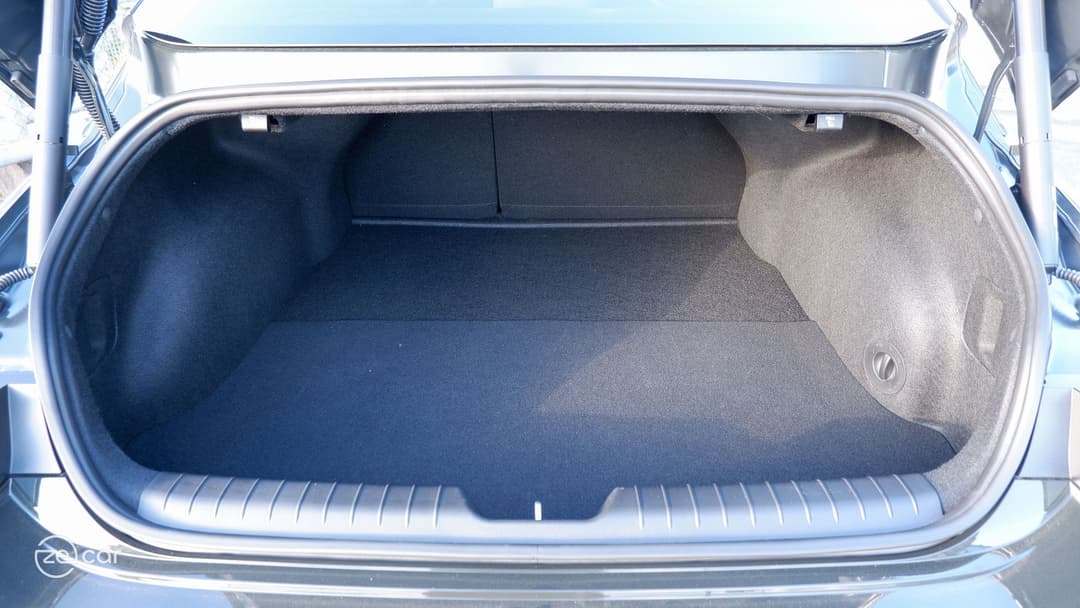
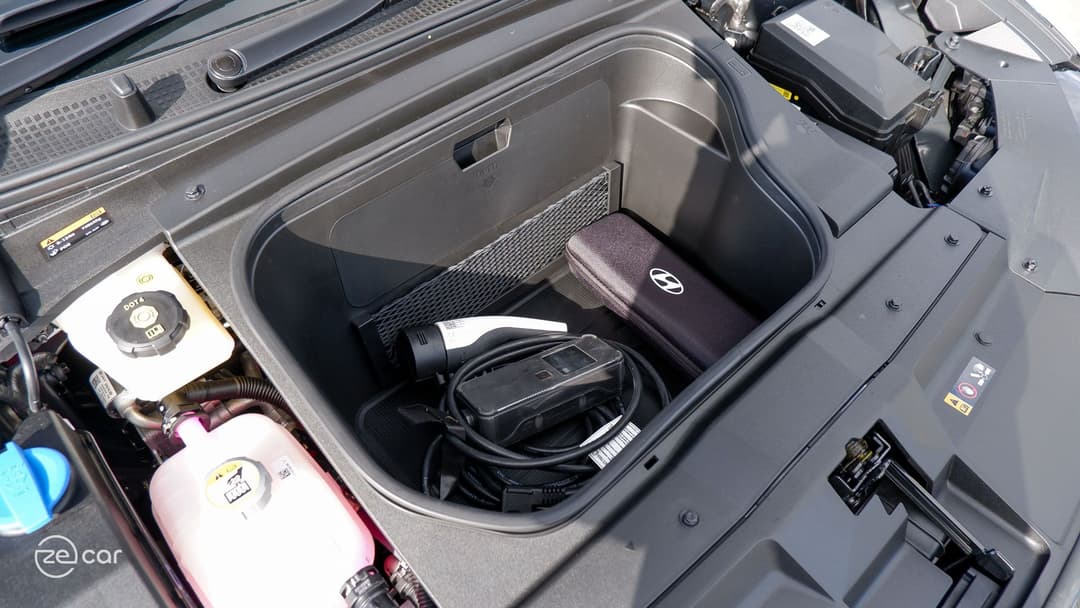
The Ioniq 6 boot is electrically operated with a hands-free function and has a lock all doors button for closing the tailgate (another previously Genesis-exclusive trait).
The electric sedan provides a deep 401-litres of cargo capacity and the rear seats can fold down in a 60/40 divide. Unfortunately, the loading lip is high, there aren’t any bag hooks, and the underfloor space can only store the tyre repair kit. Moving boot floor is also the cheapest part of the Ioniq 6 – it’s thin and flimsy.
The Ioniq 6 boasts a deep 45-litre frunk storage space since this Dynamiq RWD model lacks a front motor (AWD versions are restricted to a mere 14.5-litres). It’s a useful space for storing charging cables and the included vehicle-to-load adapter, and is lid-free similar to its Tesla Model 3 and Polestar 2 rivals.
Ioniq 6 Technology and Safety Assist
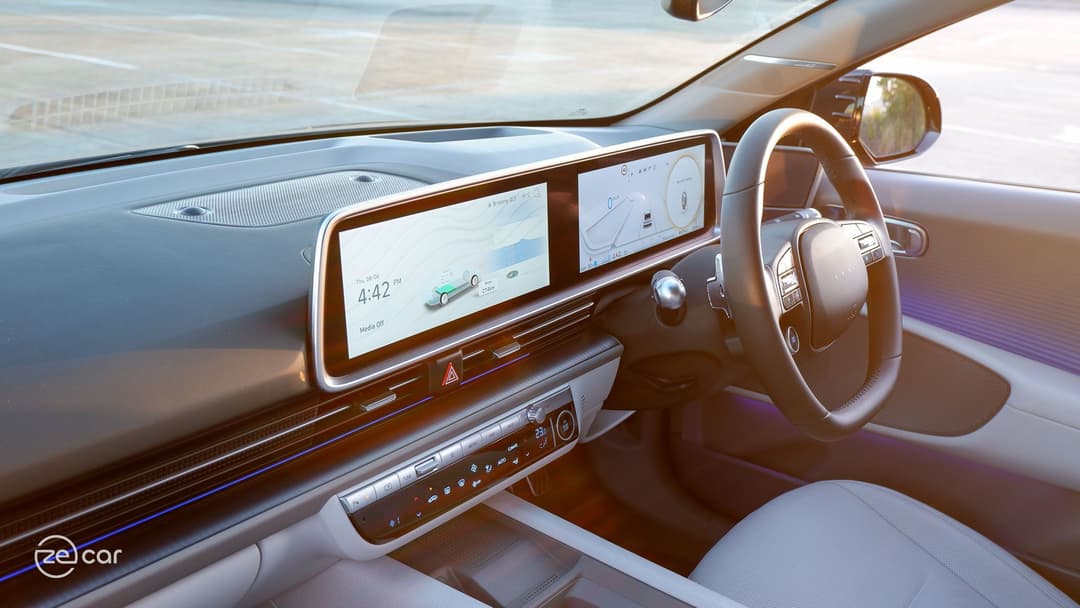
The Hyundai Ioniq 6 features two 12.3-inch central touchscreen and driver’s instrument displays running the company’s own operating system.
The South Korean carmaker’s software is mostly easy to use and now features more unique pixel elements across the user interface, with automatic light/dark mode switching.
While a Qi wireless charging pad is standard, I turned it off as the Ioniq 6 still unfortunately has wired Apple CarPlay and wired Android Auto smartphone projection via the USB-A port.
A key inclusion is Hyundai’s Bluelink internet-connected services, which brings over-the-air (OTA) software update capability, shows more up-to-date public charging stations in the built-in maps, and a rather rigid built-in voice control.
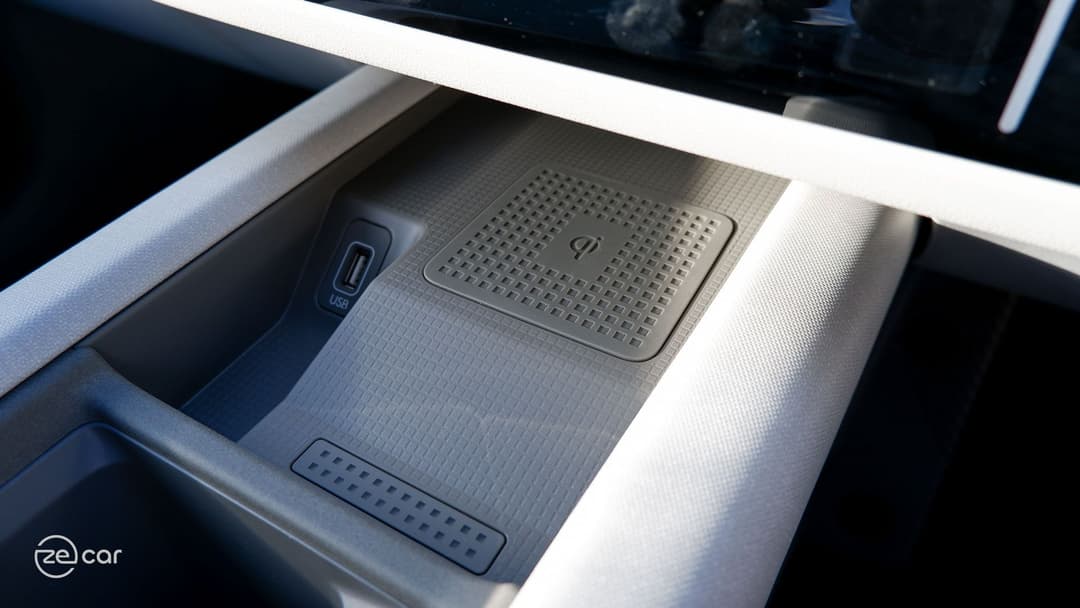
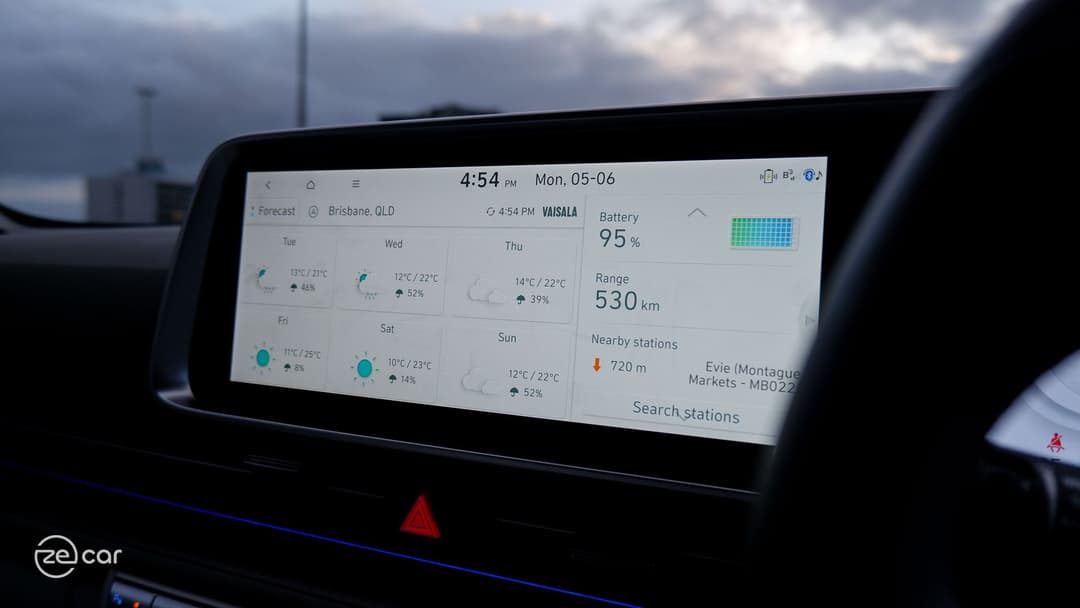
Importantly, the Bluelink connected smartphone app lifts the Ioniq 6 into the modern age.
It has handy features, such as pre-conditioning the climate control, monitoring the charging status, and taking a picture from the 360-degree cameras remotely. It was reliable to use, yet slower to load and strangely couldn’t set the heated seats on (despite being possible on the combustion-engined Palisade large SUV).
Below the touchscreen is a dedicated touch-sensitive climate control panel. Although welcome, the touch buttons are small and there’s no tactile feedback as on Genesis models. The standard head-up display (HUD) clearly projects onto the windscreen, but the Ioniq 6 misses out on the augmented reality function as found on the Hyundai Ioniq 5 or Kia EV6.
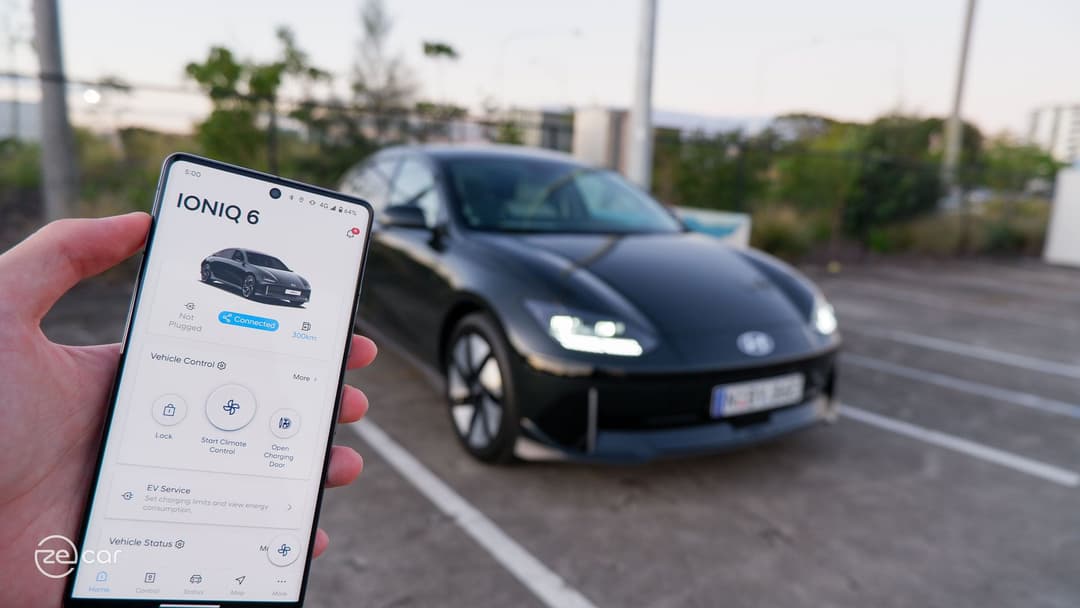
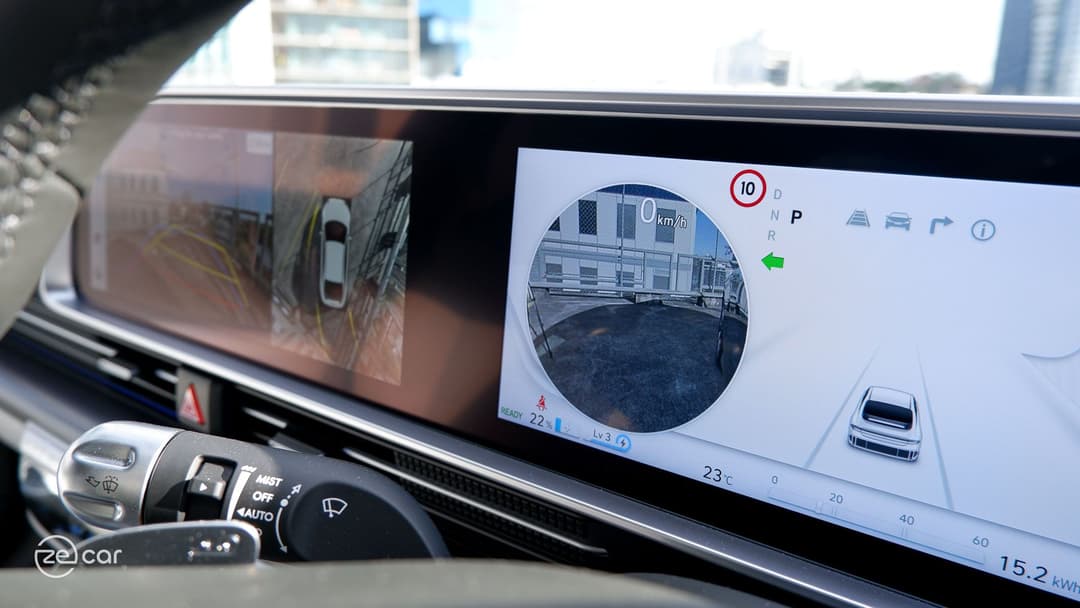
The most affordable Ioniq 6 Dynamiq includes the complete suite of camera- and radar-based active safety assistance systems as standard (detailed in full here).
Notably, Hyundai Motor Group vehicles uniquely allow driver’s to enable lane-centring assist at any speed without the need to activate adaptive cruise control, with some driver input required.
Similarly, the inclusion of a 360-degree camera system, blind-spot view cameras, and side parking sensors (previously reserved Genesis luxury cars) are convenient to help manoeuvre this long medium electric sedan.
An often overlooked safety feature of Bluelink connected services is automatic emergency services calling when the airbags are deployed.
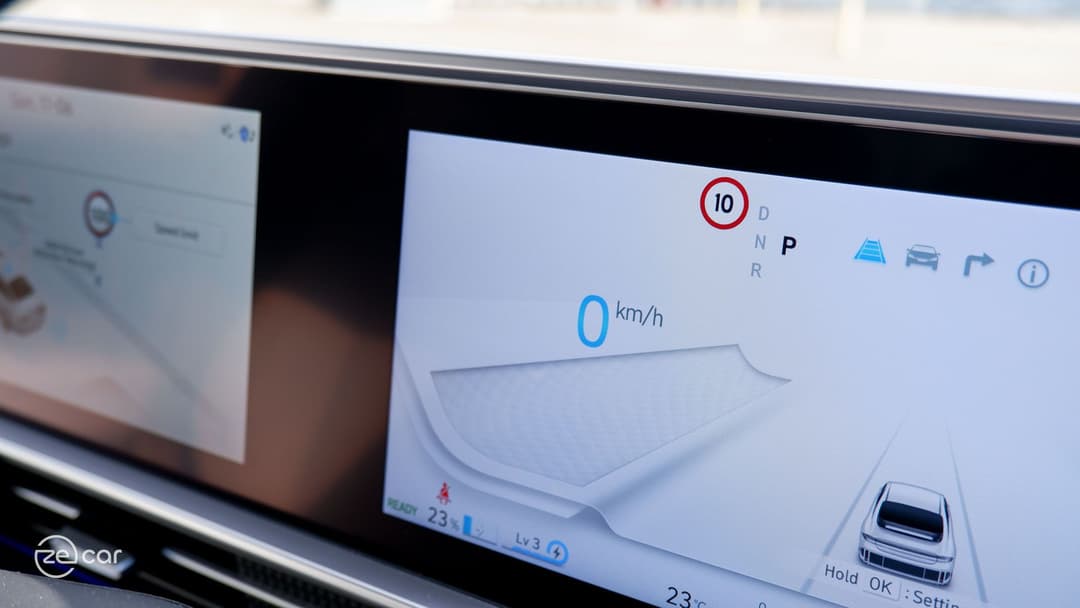
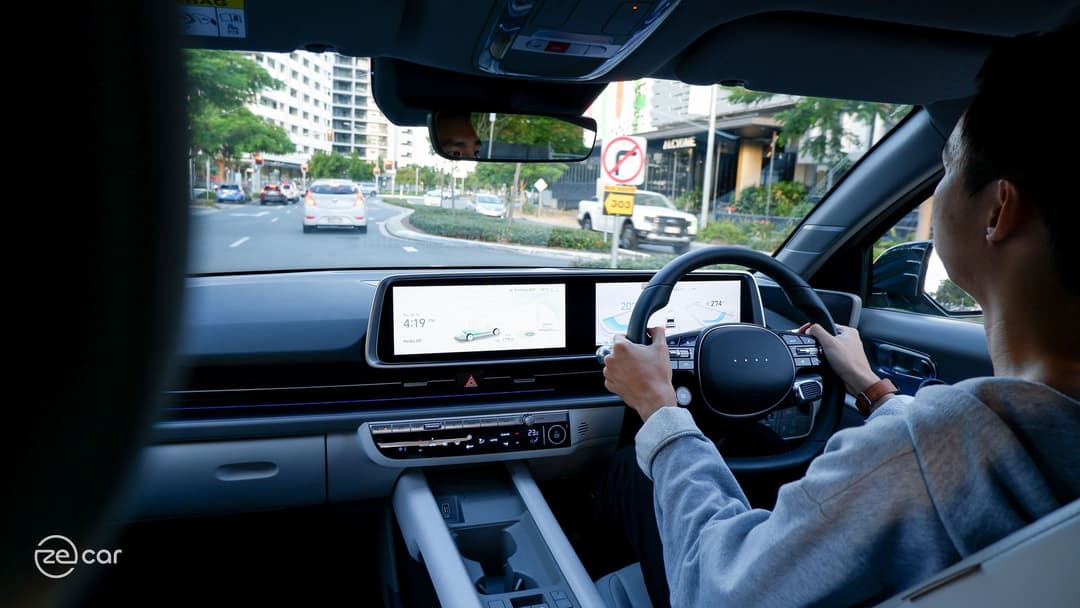
Unfortunately, the Ioniq 6 brings the South Korean carmaker’s European-compliant speed limit assist system.
While the road sign recognition accurately scans signs, it chimes every time the vehicle passes one and irritatingly beeps several times if you go a hair above the speed limit – which disrupts any audio playing through the decent eight-speaker Bose branded system. This includes erroneously recognising 40km/h school zones at all times and (unrealistic) car park speed limits.
We wish there was a leeway setting available. Thankfully, it’s reasonably quick to turn off in the touchscreen, but drivers do need to disable it every time the vehicle starts and it also stops the handy speed sign recognition.
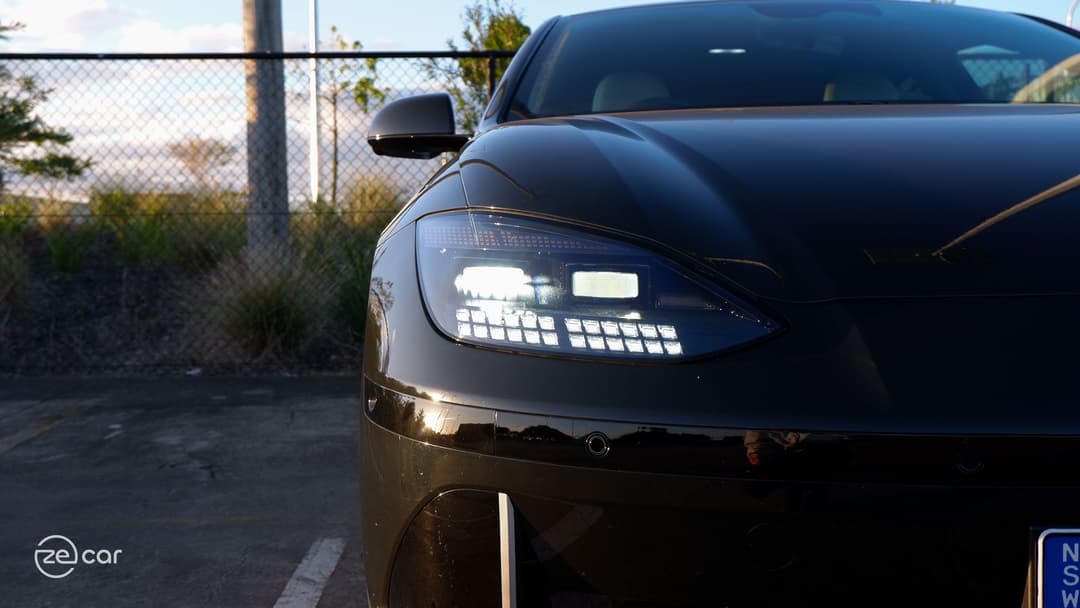
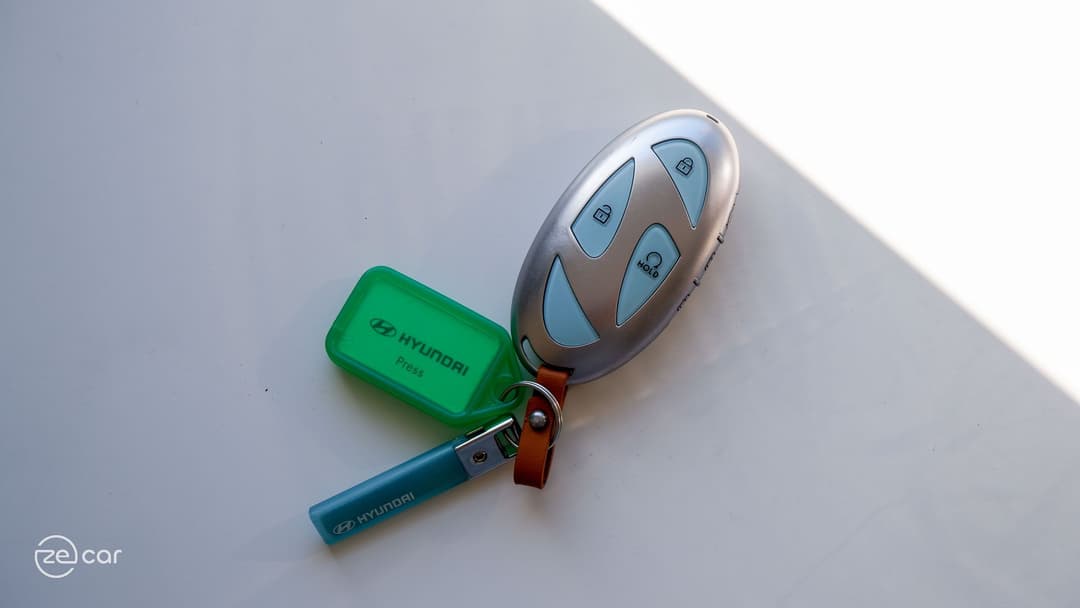
Surprisingly, adaptive matrix LED headlights are standard on all Ioniq 6 models, unlike related EVs. The lights perform well at night and, when the auto high beams are activated, it effectively turns off select bulbs to avoid dazzling other road users. Though, it can react slower at times to the conditions and does seem to have larger segmented pixels.
Also noteworthy is the improved semi-automatic parking system, which now uses the cameras to reliably detect parking lines. While it isn’t useful everyday, there’s a better chance it will work when you do show the party trick off via the remote key.
Ioniq 6 Range and Charging
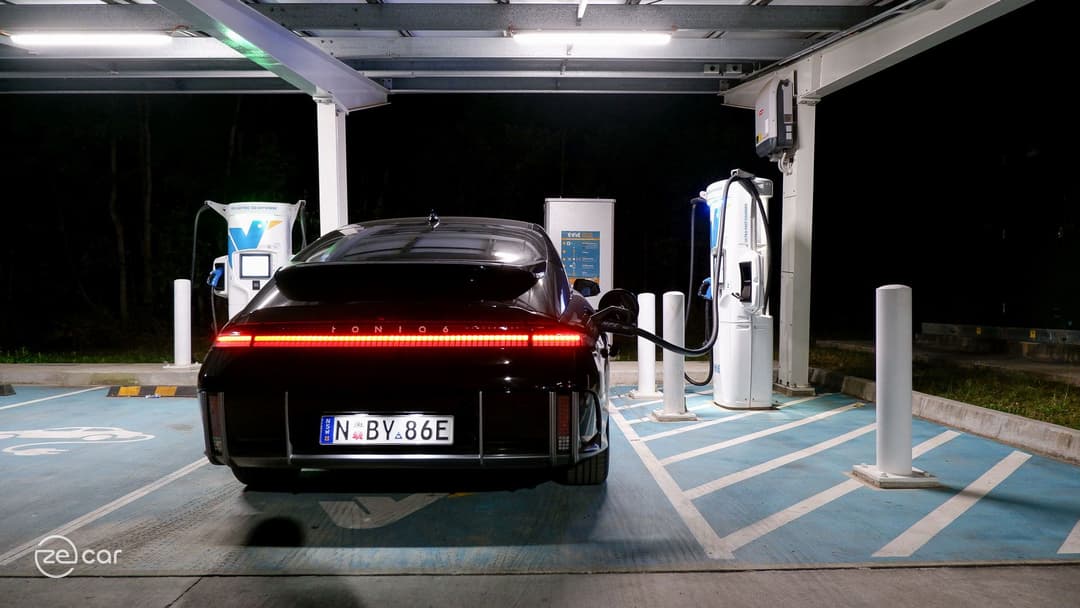
All Hyundai Ioniq 6 electric sedan models house a 74kWh usable lithium-ion battery pack and is rated to charge at up to 10.5kW AC and 350kW DC speeds, with an ideally 80 per cent maximum limit to maintain good health (full specs detailed in full here).
As per all E-GMP models, it uses a more advanced 800-volt class (697-volts to be exact) architecture, which allows longer sustained fast charging and demands less current for cooler charging thermals.
In our real-world Ioniq 6 charging test on a 350kW DC ultra-rapid station, we only achieved a 10 to 80 per cent charging time in 31 minutes.
It quickly peaked at around 227kW after four minutes, but throttled to the 90kW range for most of the session.
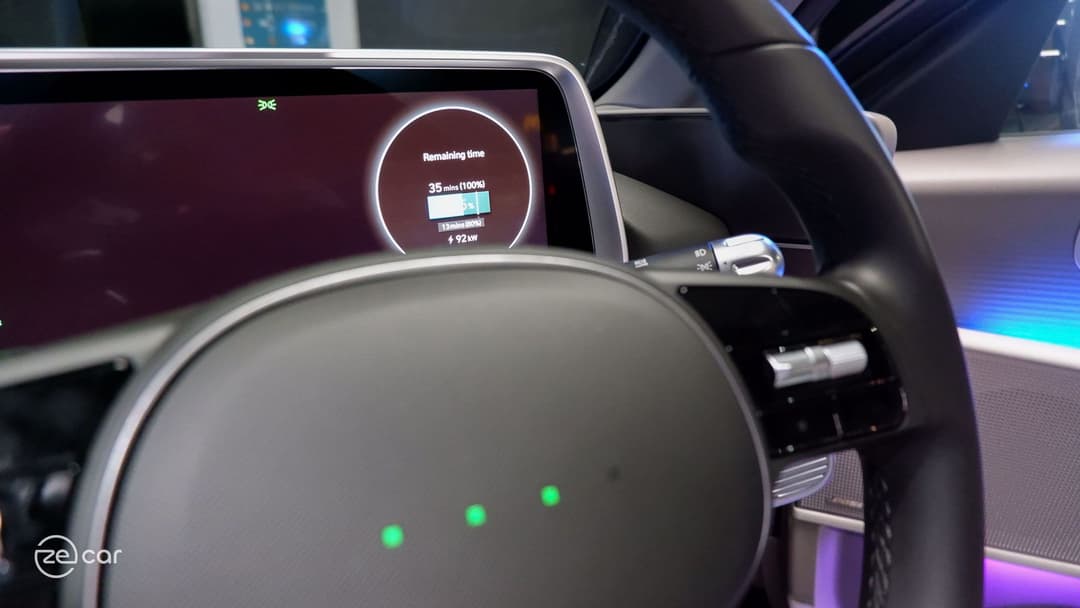
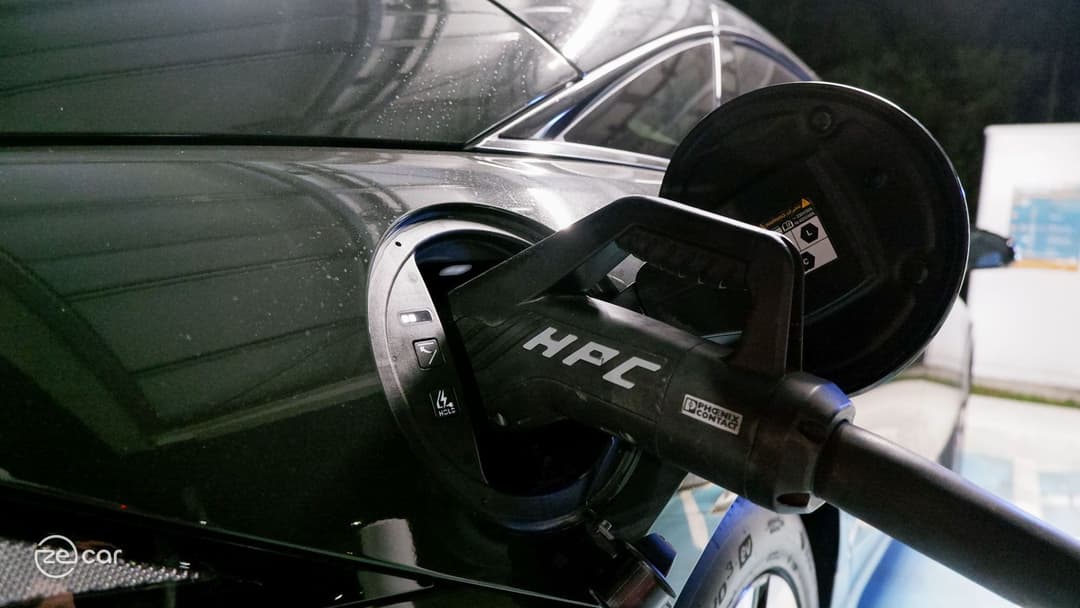
We believe this is an abnormal charging result, as numerous Hyundai group E-GMP cars we’ve tested previously – such as the Hyundai Ioniq 5, Kia EV6 and Genesis GV60 – can keep high 150kW-plus rates for longer to complete charging in around 20 minutes.
The battery management system throttling in this case is likely due to a colder battery (tested in sub-20 degrees Celsius winter) – which didn’t heat up enough during the entire charging session either. This explains the strange peak towards the end of the 80 per cent mark (presumably it reached optimum temperature). Only the top-spec Epiq model has an active battery pre-conditioning function.
The Ioniq 6’s rear-right quarter charging port position is an accessible location and provides LED illumination. Interior and exterior vehicle-to-load (V2L) is standard on all variants, but you can’t use it while charging the vehicle.
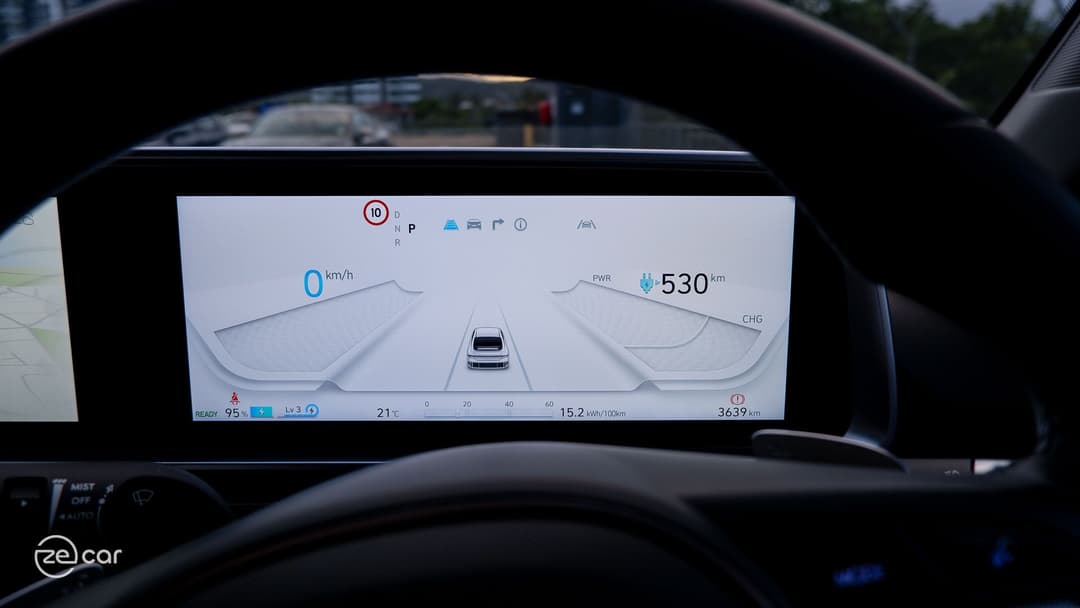
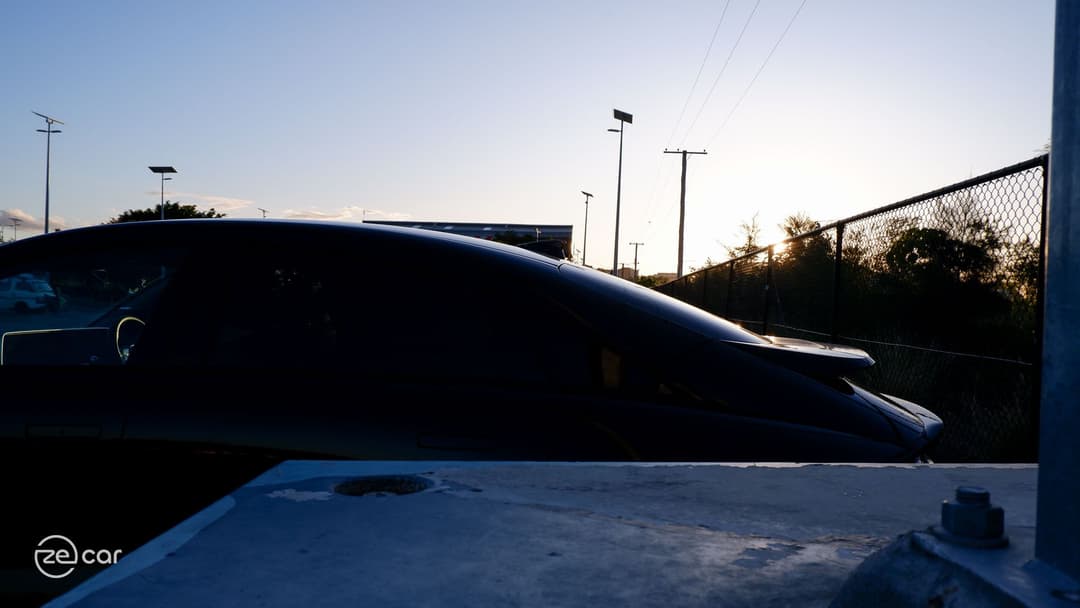
Additionally, Hyundai claims the base Ioniq 6 Dynamiq RWD has 614km of driving range and 143Wh/km energy consumption on the combined WLTP testing cycle. This matches many comparable petrol engine-powered vehicles – and ousts the Tesla Model 3 Long Range’s 602km range claim.
In our week of driving a mix of urban and highway environments (tending more towards the latter), the Ioniq 6 indicated a respectable 507km real-world range and 146Wh/km efficiency.
While this energy consumption figure is in line with the carmaker’s claim, there is a sizable drop in realistic electric range due to highway driving – which is hard to avoid in Australia, including in and around major capital cities. From our experience, the consumption cuts to around 130Wh/km – equating to 570km of range if driven in more low-speed, stop-start traffic conditions.
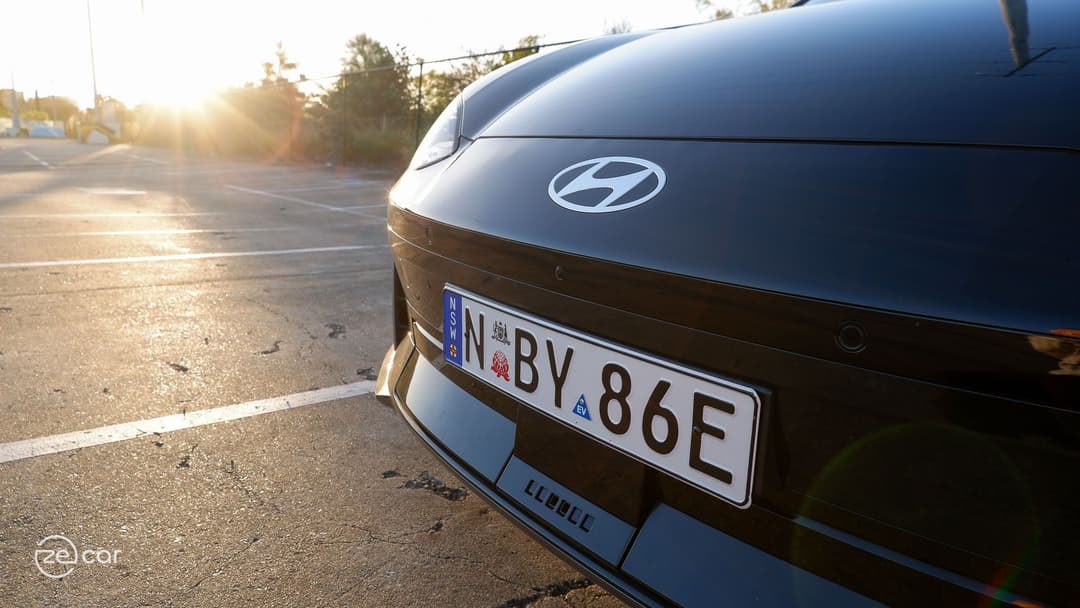
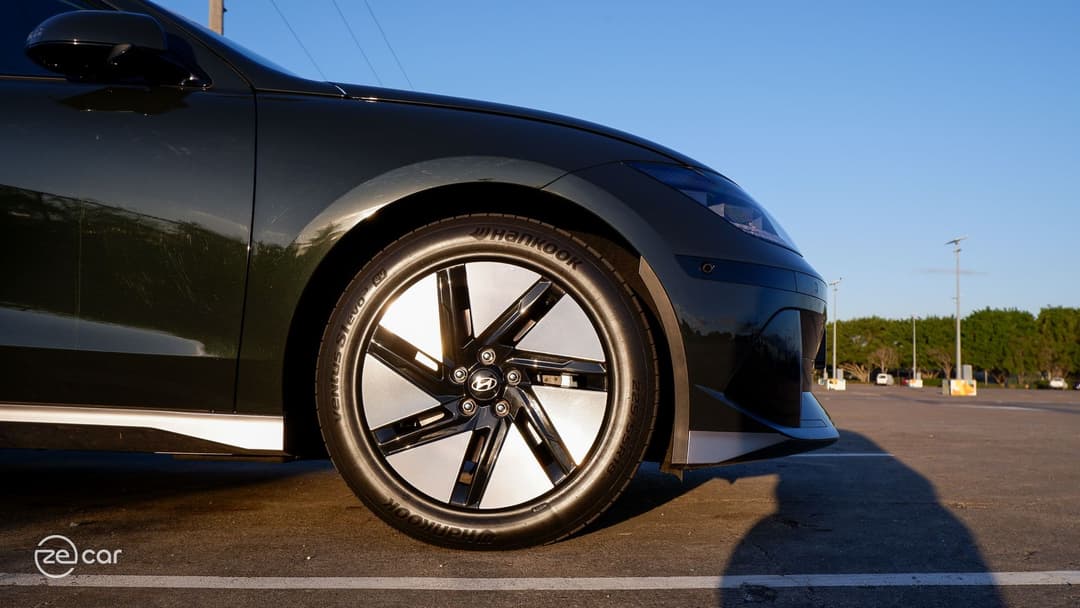
The entry-level Ioniq 6 Dynamiq RWD is best suited for long-distance driving thanks to its more efficient smaller wheels and single-motor drivetrain. In contrast, Techniq and Epiq all-wheel drive (AWD) models cut claimed range by a substantial 95kms.
It's worth noting that the outgoing Kona Electric Extended Range small SUV – with a less aero-friendly design, smaller battery and a more powerful front motor – achieved similar real-world range and better energy efficiency in our tests.
The pre-facelift Polestar 2 Long Range Single Motor competitor was less efficient with lower range in our experience, though.
Ioniq 6 Driving and Ownership
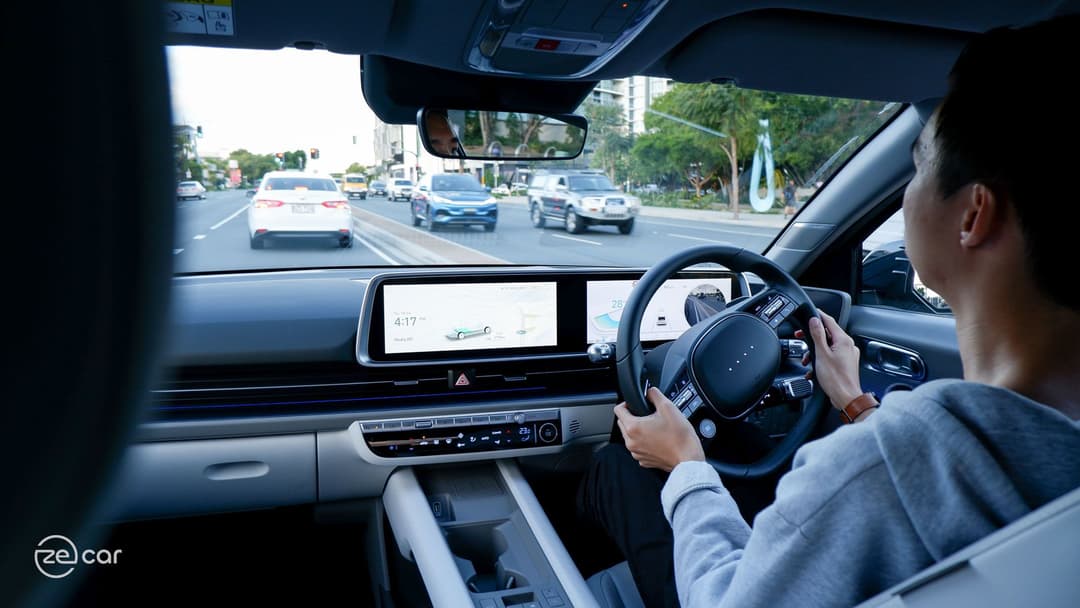
The base Hyundai Ioniq 6 Dynamiq is powered by a single electric motor producing 168kW of power and 350Nm of torque. It is rear-wheel drive and is claimed to accelerate from 0-100km/h in 7.4 seconds (full specs detailed in full here).
While it is the least powerful drivetrain in the electric sedan line-up, there’s still more than enough power for public roads thanks to the instant electric torque on tap at any speed.
Acceleration isn’t neck-breaking – but is smooth, zippier than the Polestar 2, and much more controlled than the overzealous outgoing Kona Electric SUV. The eco Hankook EV tyres still provide good grip around corners, with only minimal wheel slip at the rear when accelerating harder while turning.
The Ioniq 6’s ride setup is most impressive – adept on rough and patchy Australian roads to make it a great long-distance tourer.
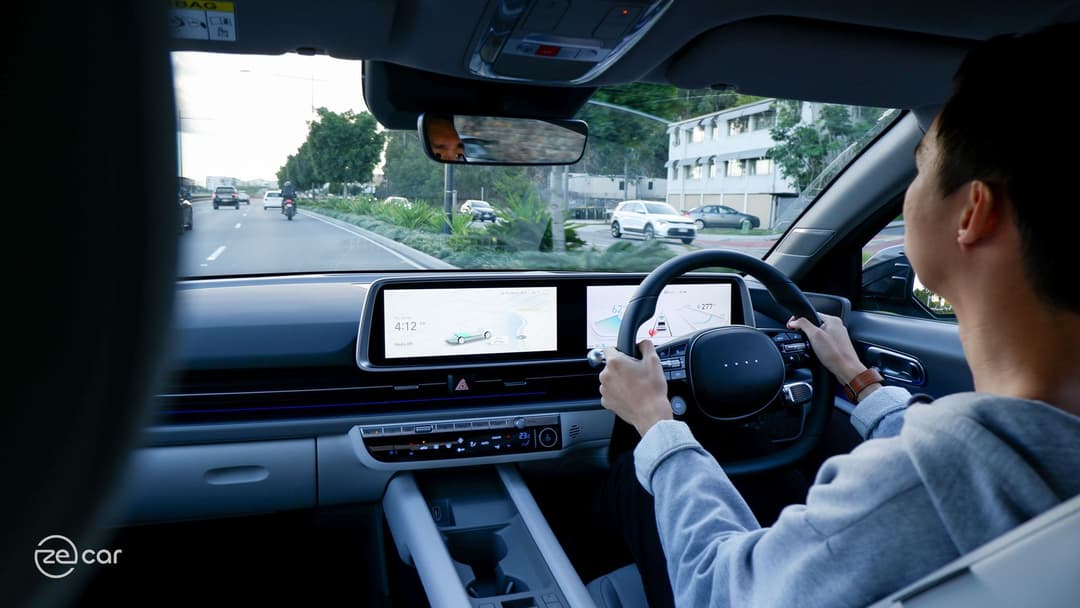
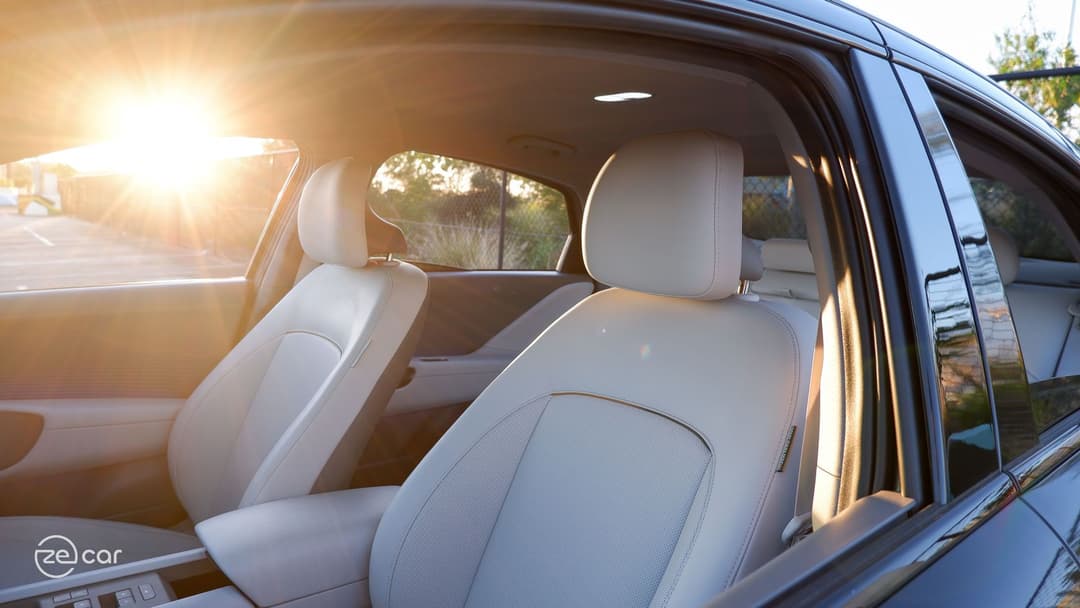
The dampers and higher profile 18-inch alloy wheels in the Dynamiq results in a comfortable and compliant drive. It effectively suppresses coarser road surfaces and imperfections, with minimal vibrations sent into the interior – in contrast to the sub-par suspension on the related Ioniq 5 SUV. Noise isolation is also impressive thanks to the thicker tyre sidewalls, acoustic glass and aerodynamic body shape – including on rougher country roads.
However, the Ioniq 6 has oddly light steering at low speeds. While it does make manoeuvring and parking this long sedan easier, it felt quite disconnected. It firms up at speed and improves with sport mode enabled, but there’s still some vagueness in the centre – unbefitting for its sporty exterior design.
Similarly, the brake pedal is relatively sensitive with the ‘biting point’ for at a higher mark. This made it hard to modulate smoothly, causing some embarrassing jerky and abrupt braking moments especially when low-speed reversing.
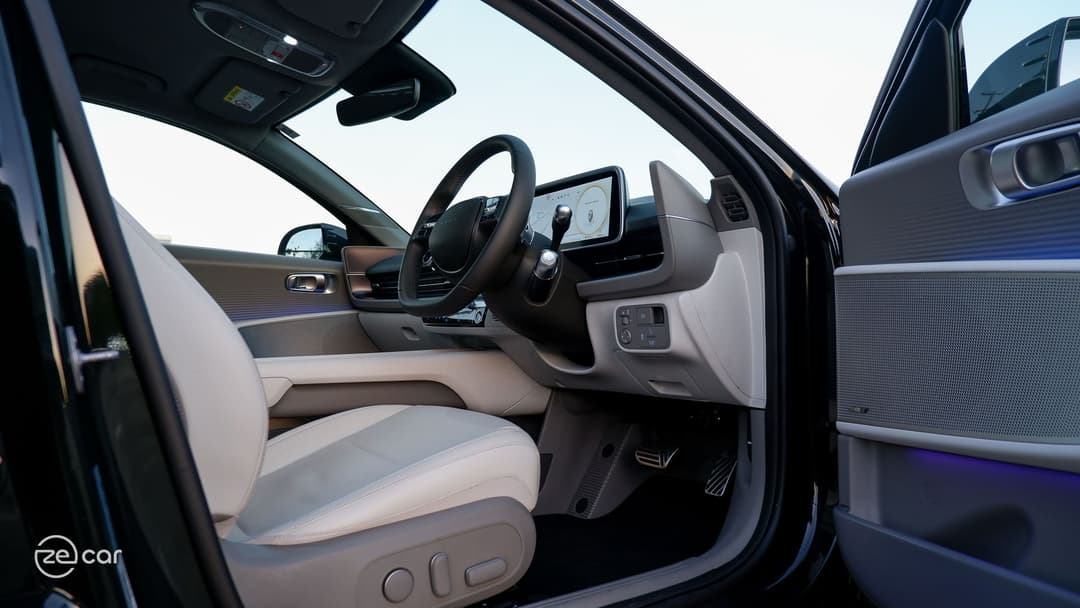
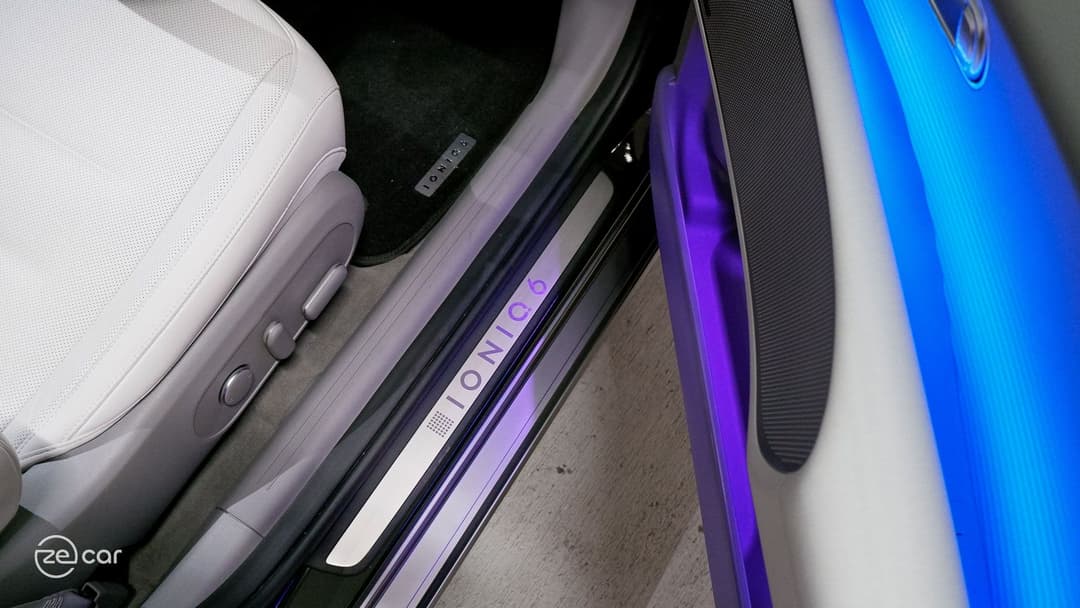
Critically, I found it particularly difficult to set a comfortable driver’s seating position in the Ioniq 6.
The larger steering wheel column, due to the attached drive selector stalk, was most irritating as my knee kept hitting it when switching between pedals.
Combined with the forward-positioned wide instrument display and lower seating height, it was hard to not avoid hitting the column and blocking elements on the instrumentation in view. The driver’s floor space was limited, too, with a small footrest on the side that couldn’t completely fit my large-sized shoes.
Furthermore, Hyundai has thankfully improved its ‘i-Pedal’ regenerative braking system, yet it still isn’t a true one-pedal driving system. Compared to previous EVs from the brand we’ve tested (and criticised), the Ioniq 6 seems to have adopted new software that’s more sensitive to turn on the rear brake lights – without the need to strongly slow down to warn other road users.
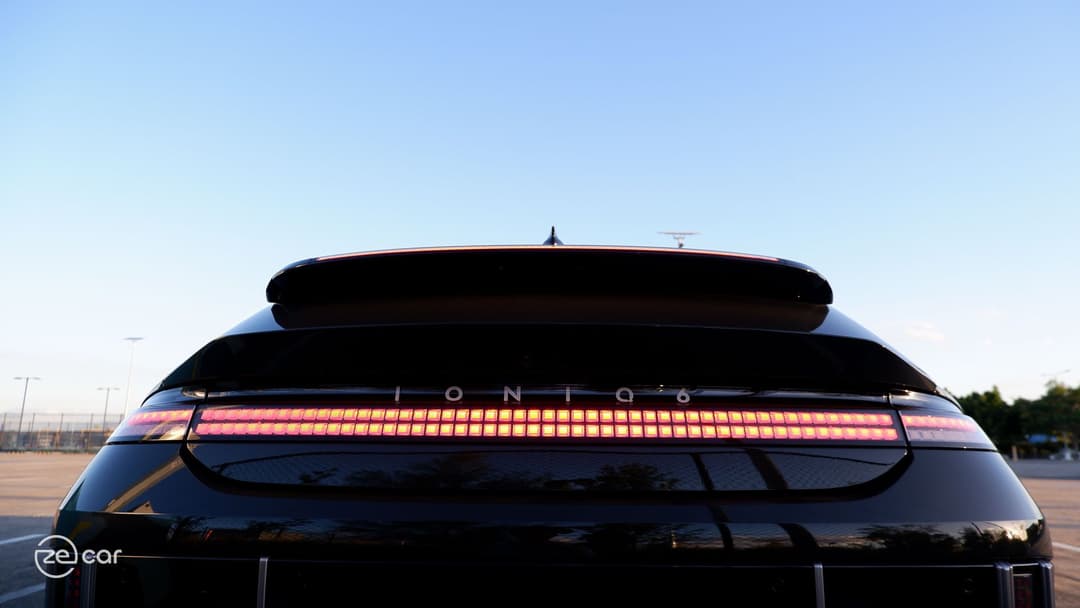
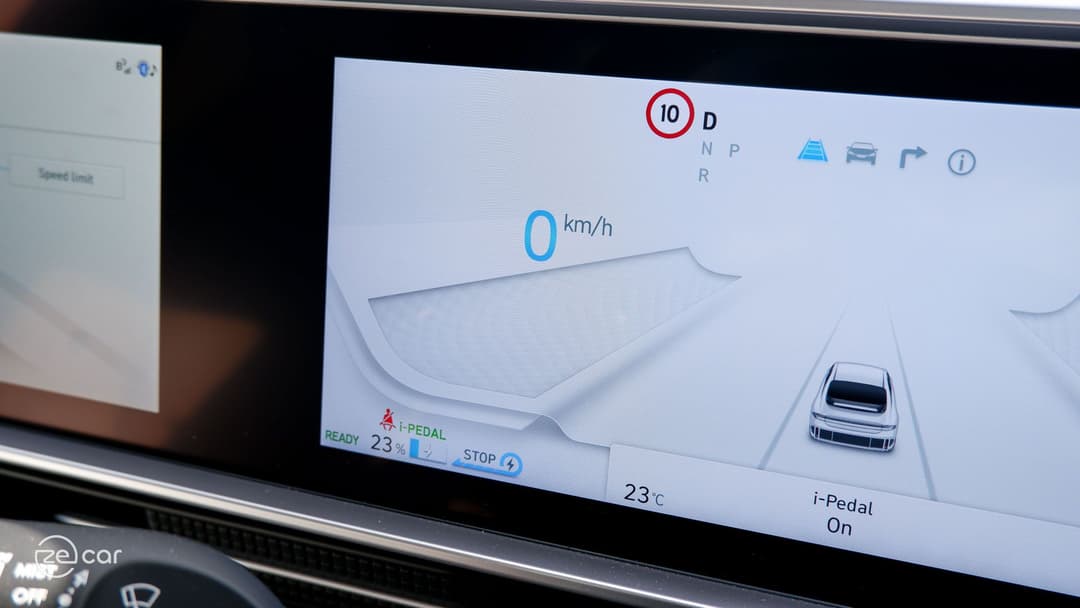
However, once at a complete stop, it still doesn’t keep the brake lights illuminated, requiring drivers to press the brake pedal. Strangely, it now does maintain the brakes if it’s on a hill to prevent rolling, though not on flatter gradients.
There’s no indication of whether the brake lights are illuminated in the Ioniq 6’s instrument display, so drivers beware. In contrast, the Polestar 2 electric car’s well-tuned one-pedal driving mode always keeps the brake lights on when stopped and it’s a similar story with Tesla EVs.
All-round visibility was good despite the sloping roof, but the speaker hardware patterns at the rear did reflect on the back glass (and subsequently rear mirror view) during the day.
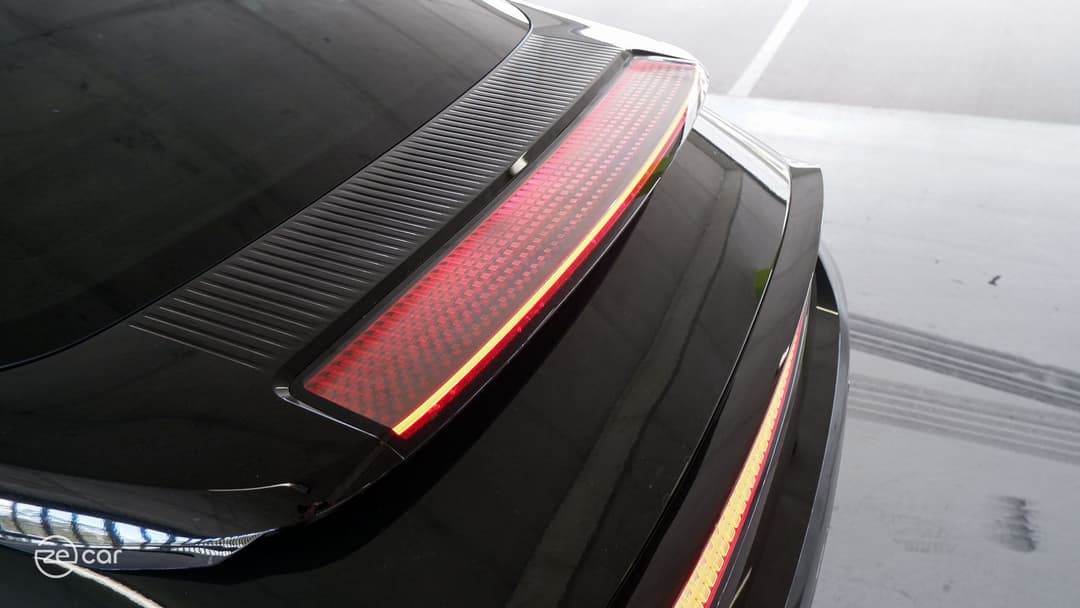
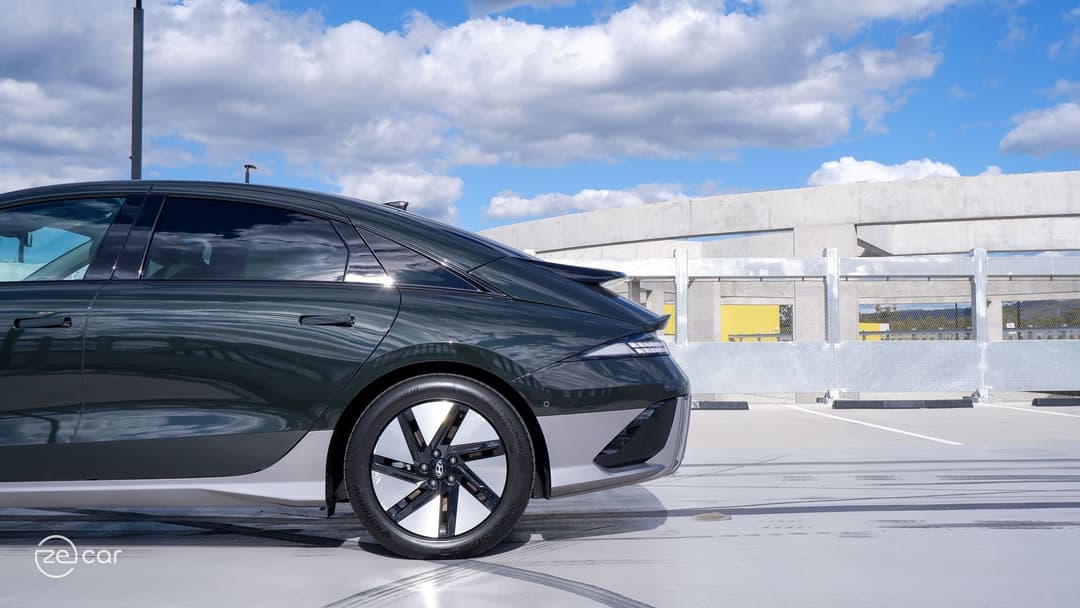
The Hyundai Ioniq 6 is covered by an industry standard five-year/unlimited kilometre vehicle warranty and an eight-year/160,000km battery warranty (which excludes degradation).
Servicing is only required every 24 months/30,000km, which is more appropriate for an EV. But, the company’s unlimited capped-price servicing outlines that the most maintenance visits cost $560 each, which isn’t as affordable and comparable to servicing shorter intervals. At 120 months/150,000km and after, it gets more expensive at $865 or more per service.
2023 Hyundai Ioniq 6 Verdict
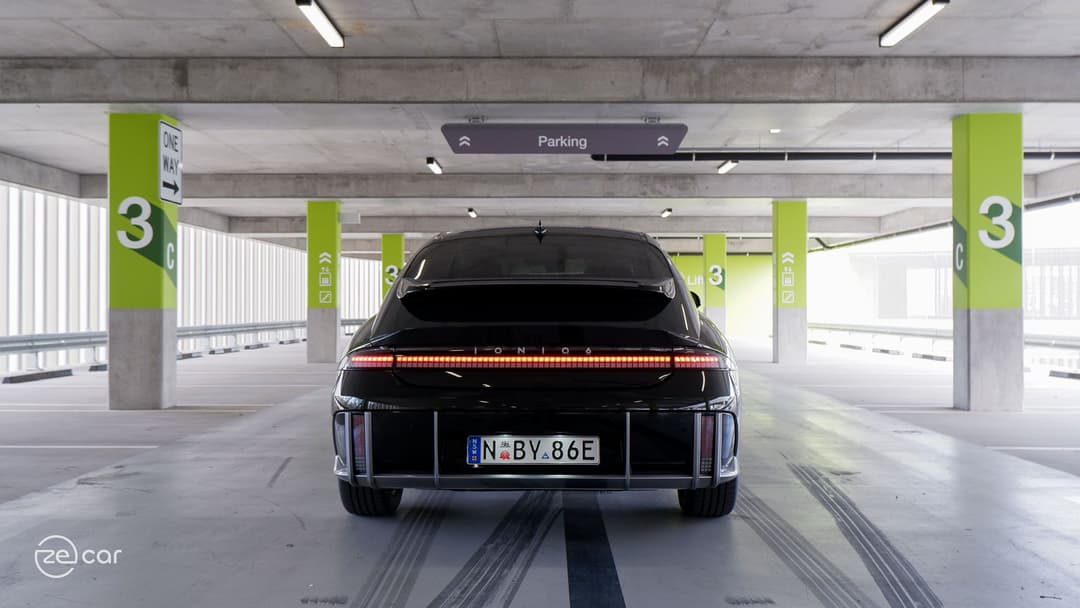
Overall Rating: 8.2 out of 10
💰Value for money: 9
📱Tech and safety: 9
📏Size and practicality: 7
⏱️Driving and performance: 8
🔌Range and charging: 9
🛠️Warranty and running costs: 7
Full pricing and specs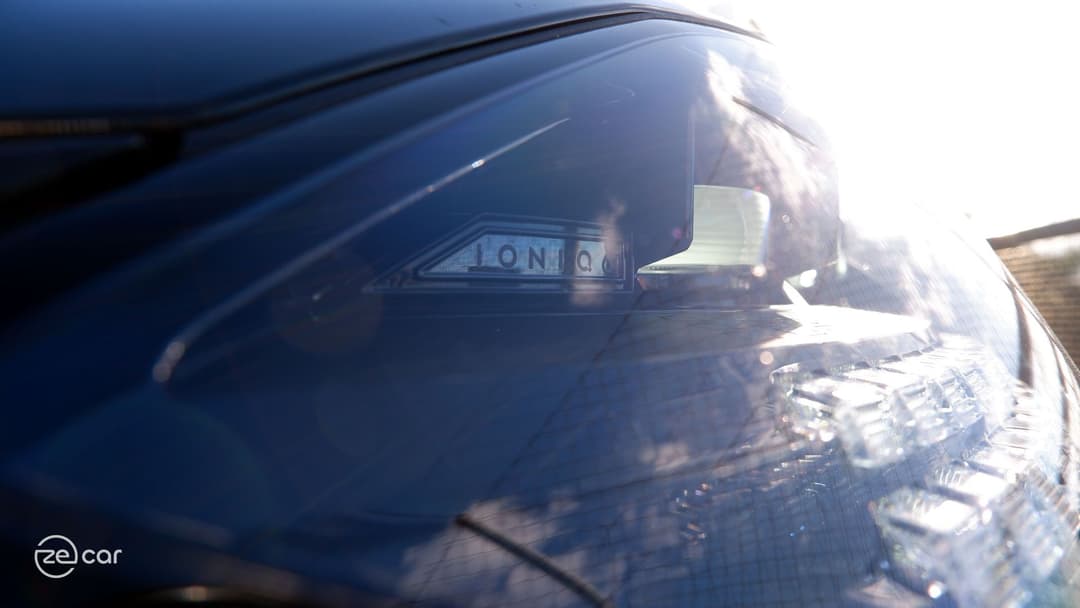
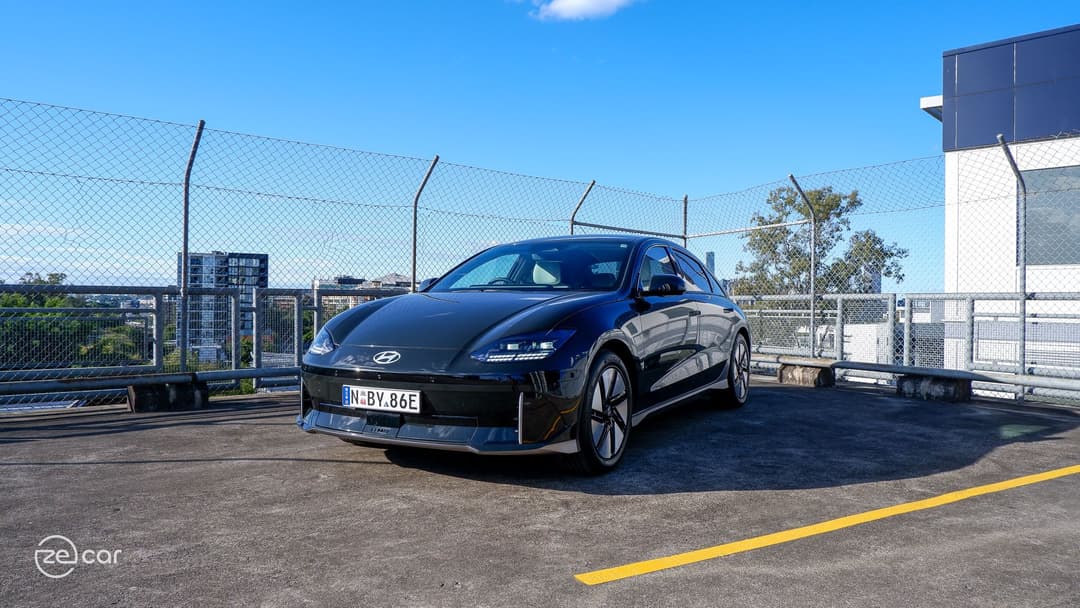
The Hyundai Ioniq 6 electric sedan achieves the ‘ultimate EV’ criteria well – long range, high energy efficiency, and ultra-rapid charging – albeit under ideal conditions.
It’s a comfortable tourer with a sharp retro-modern design, step up in design details and quality. However, there are driver ergonomic weaknesses, the steering and brake pedal need some refining, and the regenerative braking system, while improved, still needs addressing.
This base Dynamiq RWD is the pick of the Ioniq 6 range as it comes with most features as standard, theoretically the most comfortable ride, and offers the longest range by far. But, the real-world range in our week-long experience was notably less than Hyundai’s claim – if driven on highways.
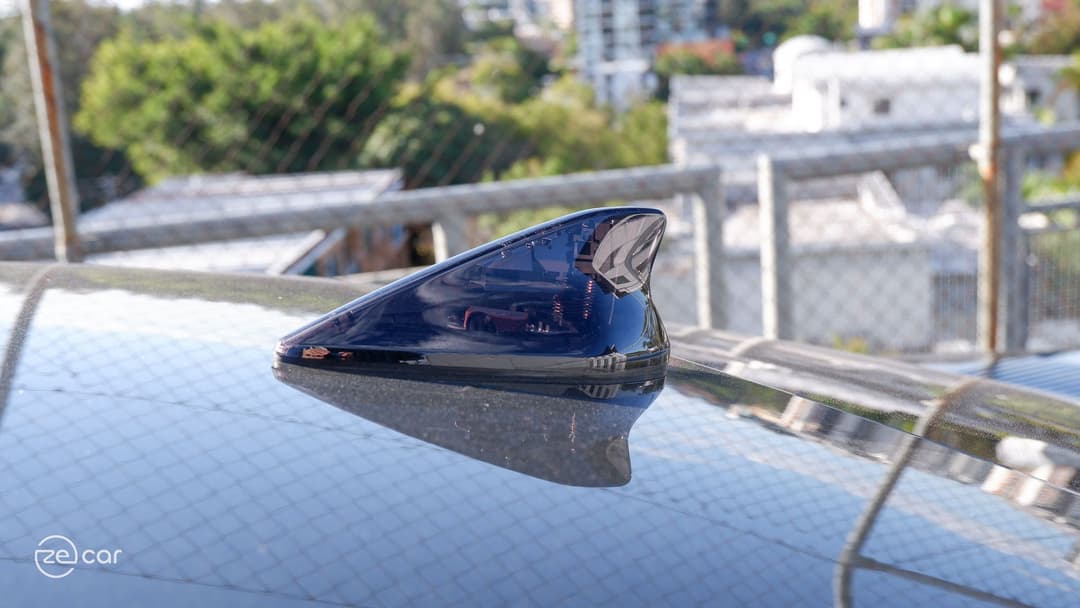
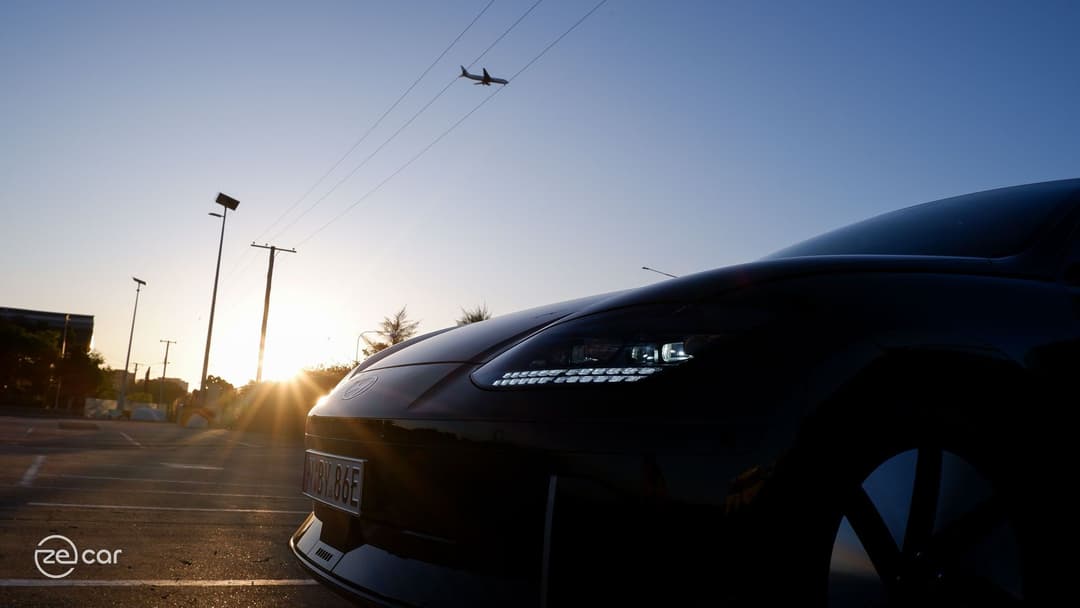
We also believe the current $74K before on-roads starting price is still a little steep. Cheaper variants with less equipment and the smaller 54kWh battery found overseas would make it more accessible to rival the popular Tesla Model 3 RWD and Polestar 2 Standard Range.
If practicality is a priority, consider the slightly more affordable Hyundai Ioniq 5 electric SUV instead – but the Ioniq 6 isn’t too egregious for rear passengers and storing items.
Shortlist the Ioniq 6 if your driving habits require longer range or if you can’t always easily access a power plug. But, we also need the public charging network to dramatically catch up and improve its reliability for a true regular long-range driving EV.
Ioniq 6 FAQs
Datawrappers by Danny Thai
Photographs by Henry Man
Read more👇
2023 Polestar 2 Long Range review
About the author
Stay up to date with the latest EV news
- Get the latest news and update
- New EV model releases
- Get money savings-deal




